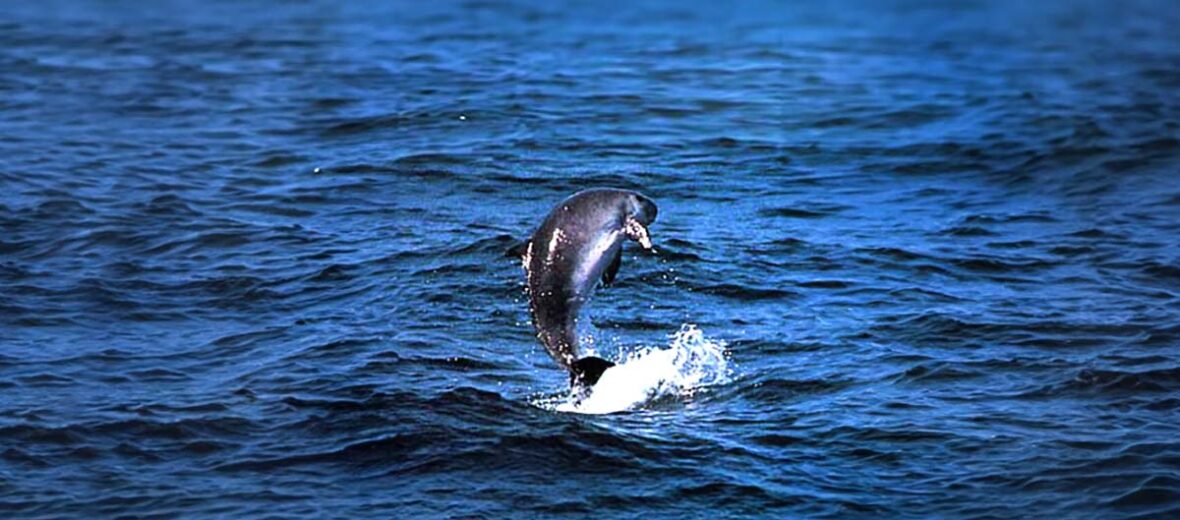
The dwarf sperm whale can be found throughout all of the world’s oceans, preferring deeper tropical and temperate waters. These critters are related to the pygmy sperm whale. Even though these diminutive whales are subjected to overfishing, pollution, and climate change, they are still abundant enough to earn the listing of Least Concern by the IUCN. Their population trend is unknown though.
First the Stats…
Scientific name: Kogia sima
Weight: Up to 594 lbs.
Length: Up to 8.9 feet
Lifespan: Up to 22 years
Now on to the Facts!
1.) These critters have been documented living individually and in pods of up to 10 individuals.
2.) They are slow-swimming and careful, barely breaching the water’s surface to breathe. Sometimes they have been seen just sort of laying at the surface, not moving at all.
3.) Dwarf sperm whales are presumed to be able to dive to depths of up to 1,000 feet.
4.) A group of whales is called a gam, herd, mod, pod, or school.
5.) Echolocation is likely utilized to locate food.
But wait, there’s more on the dwarf sperm whale!
6.) Being piscivores, these whales prey on fish, squid, octopus, shrimp, and crabs.
7.) Females undergo up to an 11 month gestation (pregnancy) that yields a single calf.
Did you know…?
It has been speculated that there are 2 separate species of dwarf sperm whale: the Atlantic and the Indo-Pacific.
8.) The calf is weaned in up to 1 year and is sexually mature in up to 5 years.
9.) Much like cephalopods, these whales have the ability to eject up to 3 gallons of red/brown fluid when threatened. This has been coined the squid tactic.
10.) Their upper jaw houses up to 6 teeth and their lower jaw has up to 24 teeth.
11.) They are preyed on by orcas and great white sharks.
Now a Short Dwarf Sperm Whale Video!
Be sure to share & comment below! Also, check out the Critter Science YouTube channel. Videos added regularly!
Want to suggest a critter for me to write about? Let me know here.
Some source material acquired from: Wikipedia & IUCN
Photo credit: Robert Pitman (NOAA)



